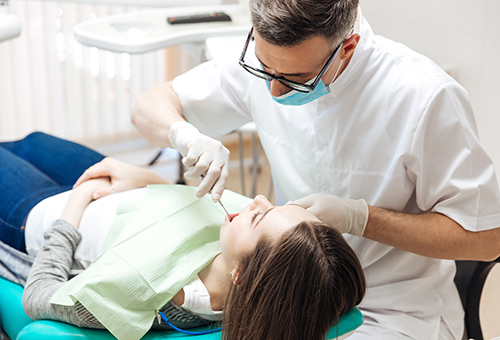Overview of Bothell Orthodontics / Braces
Bothell Dental Orthodontics/Braces are wire-based appliances that orthodontists use to correct crowded and misaligned teeth or jaws. In fact, many people who need dental braces get them during their early teenage years, but adults also can benefit from wearing braces. Our dental services properly align your teeth and jaws to produce an even bite and pleasing smile.
For minor corrections, an option is a series of customized, removable appliances called clear aligners or “invisible braces.” Also, these may have a more acceptable appearance to some adults. If you’re considering clear aligners versus fixed braces, ask about the cost and the pros and cons for your specific needs. Many people need fixed braces to properly correct their dental problems.
Modern materials and technologies make the experience of having dental braces much more comfortable than in the past.
Why it’s done
Bothell Dental Orthodontics Braces offer corrective treatment for:
- Overcrowded or crooked teeth.
- Too much space between teeth.
- Upper front teeth that overlap the lower teeth too much — either vertically (overbite) or horizontally (overjet).
- Upper front teeth that bite behind the lower ones (underbite).
- Other jaw misalignment problems that cause an uneven bite.
Proper alignment of your teeth and jaws may improve not only the appearance of your teeth but also the health of your mouth and the way you bite, chew, and speak.
Risks of dental braces
Wearing dental braces is generally a very safe procedure. However, there are some risks.
Short-term risks
Braces create tiny spaces around your teeth that can trap food particles and promote bacteria-filled plaque deposits. Failure to remove deposits of food and plaque can lead to:
- Loss of minerals in your teeth’s outer enamel surface, which can leave permanent whitish stains on your teeth.
- Tooth decay (cavities) and gum disease.
Long-term risks
Long-term risks may include:
- Shorter root lengths. During tooth movement, some of the bone in the path of the moving tooth dissolves, while new bone is laid behind it. Also, permanent loss of tooth root length may occur during this process, which could lead to less stable teeth. In most cases, however, this doesn’t cause any problems.
- Loss of correction. If you don’t follow your orthodontist’s instructions carefully after your braces are removed, particularly when it comes to wearing a device called a retainer. You may lose some of the correction gained while wearing your braces.
How you prepare for dental braces
If our Bothell dentists notice problems with your teeth or jaws that may require treatment, he or she will likely refer you to an orthodontist. A dentist who specializes in diagnosing, preventing, and treating dental and facial irregularities.
Some tooth alignment problems happen when children develop and can be guided before puberty but become more apparent once the permanent teeth begin to come through the gum (erupt). However, your orthodontist may recommend waiting until enough teeth have come through before applying braces. In addition, most children get braces between the ages of 8 and 14 years, while their facial bones are still growing and their teeth are easier to move.
Preparation for braces generally involves:
- Oral exam. Our orthodontist conducts a full exam of your teeth, jaws, and mouth.
- X-rays. You’ll get a series of X-rays to determine the position of teeth. The most common is the panoramic X-ray, which shows all the upper and lowers teeth in a biting position and any teeth still developing within the jaws. Special head X-rays also may help determine the size, position, and relationship of jaws to teeth. These 3D X-rays give a better idea of the true position of the teeth to each other.
- Plaster models. You’ll bite into the soft material, which remains on your teeth for a few minutes. From this impression, a plaster model of your teeth (dental cast) is created and the orthodontist evaluates your bite. In some cases, this dental cast may be scanned into a digital format for further evaluation or treatment decisions.
- Potential tooth extraction. If your mouth is very overcrowded, there may be limited or no room in the jaw for all the existing teeth. Our orthodontist may recommend removing one or more permanent teeth to allow room for the remaining teeth to fit comfortably. This allows the teeth to fit together better and also allows for adequate space for cleaning.
- Other procedures. In severe cases, where tooth movement alone will not correct a bite that’s significantly out of alignment, jaw repositioning surgery is required in combination with orthodontics.
After your orthodontist has evaluated your teeth and jaws, he or she customizes a treatment plan for you. This most often involves the use of fixed braces, which are temporarily bonded to your teeth.
Bothell Orthodontics / Braces
More services:
Emergency Dental Treatment
Emergency Dental Treatment Do Not Wait, Call (425)-778-4445 Now If it's a real emergency, please call 911 or during non-office hours call...
READ MORENO DENTAL INSURANCE? NO PROBLEM.
The best deal we have to offer is our DAT SAVINGS PLAN. This plan covers one, two, or the entire...
READ MORE